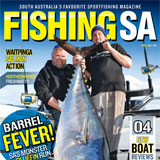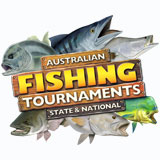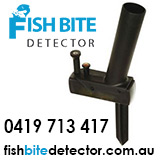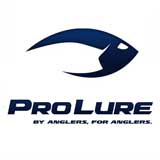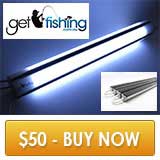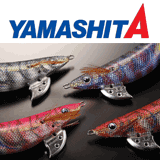Species ID
View AllSpangled Emperor

Spangled emperor are a true member of the emperor and sea bream family Lethrinidae. They are a staple table fish for many northern anglers and are prized by southern anglers who travel north to target them. Spangled emperor put up a tough account for themselves and can be a challenging opponent off the rocks and in shallow coral lagoons.
They are golden bronze in colour with distinguishing blue lines radiating from the eyes over the cheek and snout and pale blue spots on the scales. Larger blue spots appear ‘spangled’ over the upper body. The caudal fin is forked, the dorsal fin is continuous, and the top of the pectoral fins are blue. When caught they sometimes display blotchy brown bands across the body making them difficult to identify at times.
Other names
Nor’-west Snapper, Spangs, Spanglies, Norwest Snapper, North West snapper, Nor’wester, Green Snapper, Morwong, North-west Snapper, Sand Bream, Sand Snapper, Sixteen-pounders, Yellow Sweetlip, Emperor, Greater Spangled Emperor, Green Snapper, Lesser Spangled Emperor, Yellow Emperor,
Common size
30-60cm
Related species
Red throat emperor (Lethrinus miniatus), Grass emperor (Lethrinus laticaudis), Longnose emperor (Lethrinus olivaceus)
Lifespan
At least 30 years
Habitat
Spangled emperor are reef dwellers that inhabit inshore shallow reef systems all the way out to continental shelf waters up to 200m deep. They favour deep isolated reef and coral structures and adjacent sandy areas, small rises and rubbly gravelly bottom. Adults tend to form schools of similar size fish.
Reproduction
Little is known about the reproductive habits of Red emperor. What is known is that they mature at roughly 40 to 45cm and four to five years of age. They grow to about 90cm in length and 9kg in weight.
Diet
Spangled emperor are bottom-feeding carnivores that feed on crustaceans, molluscs and fish within the reef system including squid, octopus, crabs, shellfish, shrimp and small fish.
Catch care
Spangled emperor are targeted for their eating qualities. To make the most of this great tasting fish immediately bleeding and placing in a salty ice slurry will enhance the flesh. They really are a superb table fish so if you’re going to take one for a feed look after it properly. They don’t suffer too badly from barotrauma so release very well.
Information courtesy of Department of Fisheries, WA, DAFF QLD and David Fox
Spangled emperor are distributed throughout the tropical waters of the Indo-west Pacific region. In Australia they range between the Abrolhos Islands in WA northwards to central NSW, although individuals have popped up outside of this range, for example specimens have been caught as far south as Rottnest Island in Western Australia.
5 stars. Spangled emperor are very popular among Australian anglers due to their superior eating qualities. When raw, the flesh is translucent and white and when cooked becomes uniformly white. The fine, firm flesh is moist and flavoursome with a delicious sweet to mild flavour. It can be baked or steamed whole or filleted and fried, grilled, steamed, poached, barbecued or smoked. The frames make great fish stock for use in soups etc and the wings of larger specimens are delicious barbecued or deep fried in flour or batter.
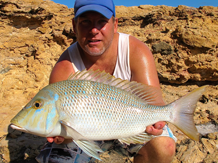
- Is a member of the family Lethrinidae (emperors)
- Can grow to 87cm in length and 9kg in weight
- Lives for at least 27 years
- Can change colour by switching on pigment cells in it’s skin
- Are easily misidentified as other species of emperor
- Have a pale blue spot on every scale
- Have no scales on the cheeks
- Good eating







